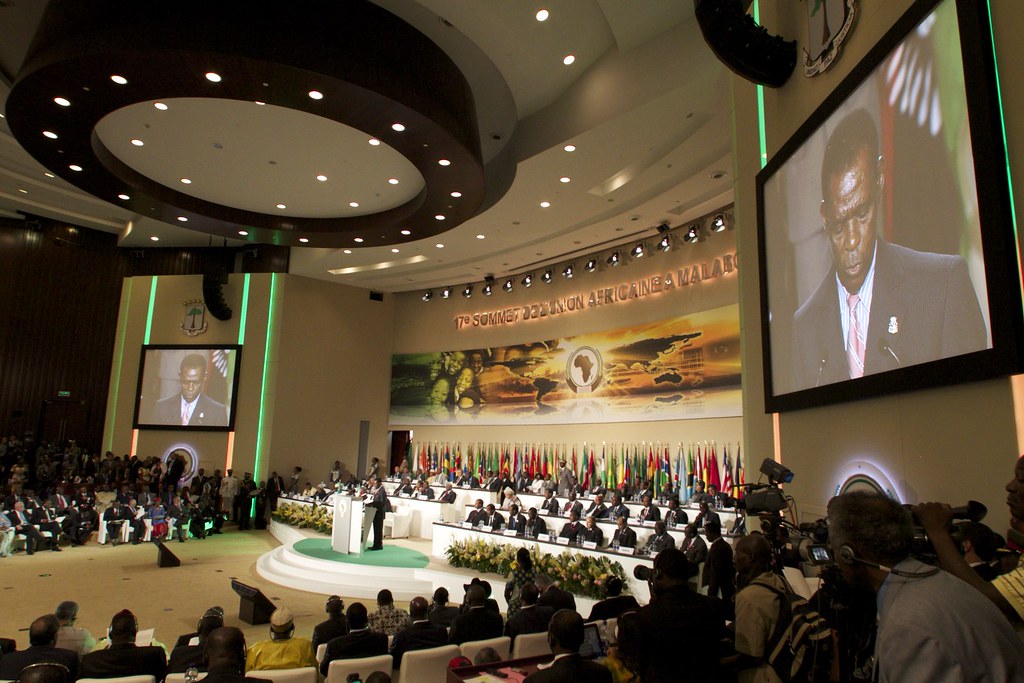Free trade areas have always been the one of the paths that countries take to develop faster. The European Union, for example, has made it easier for many European countries trading among each other. This has in turn contributed to a higher growth rate in the past 4 decades, resulting in a more developed and integrated Europe. The talk of a similar framework in Africa has always dominated the mainstream media and geopolitics of the continent. Such a framework appeared under the form of the Africa Continental Free Trade Area (AfCFTA).
The establishment of AfCFTA
Many African leaders have tried their best to push for establishment of free trade over the years, with no success. This, however, has changed and there is now a working and acceptable solution after a total of 54 African countries signed Africa Continental Free Trade Agreement. This agreement led to the establishment of African Continental Free Trade Area (AfCFTA). Only Eritrea failed to sign this agreement, citing its longstanding conflict with Ethiopia. The involvement of all these countries make AfCFTA the largest free trade area by the number of countries involved.
The Benefits of AfCFTA
The current trade volume among African countries accounts for only 19 per cent of all trades on the continent. This is in sharp contrast to Europe where 69 per cent of trades are between European countries or to Asia where intra-trading stands at 59 per cent. AfCFTA promises to increase intra-African trade by 52% by 2022 (compared with trade levels in 2010) and double the share of intra-African trade (currently around 19% of Africa’s exports) in the next 10 years. If AfCFTA can achieve this, Africa will be on the right path to becoming a developed continent.
AfCFTA will also ensure easier access to investments and a bigger market to tap into. The combined power of $4 trillion in spending and investment will spur growth across the continent. There will also be a huge market of 1.2 billion people who will be potential clients for any business opening in Africa. This will act as a great motivator for more investments across the continent.
There will also be increased welfare and incentives for business across Africa as a result of elimination of tariffs. The funds otherwise used to settle tariffs will therefore go into other investments and can even end up in social projects and salary increases for the workers of these companies.
The Objectives of AfCFTA
The establishment of AfCFTA has the following objectives:
Establishment of a single market in Africa: This will mean a complete elimination of factors that currently hinder trading among African countries. The establishment of a continental customs union will accelerate this process of taxation. There will also be free movement of business entities across the countries and an increase in tourism through the issuance of visas on arrival.
Expansion of intra-African trade: African countries are now more than ever committed to working together business-wise. With the establishment of AfCFTA, the volume of trades among Africa countries will double within the next decade. This will help Africa close the gap between intra-Africa trading and other continental free trade areas such as European Union.
Resolution of challenges coming from overlapping Regional Economic Communities(REC): The RECs have been a success across Africa. However, one of the major challenges they faced is the overlapping memberships in these communities. A good example is Tanzania, which is in the East African Community and also in the South African Development Community. These communities will cease to exist with the new agreement. This will mean all countries can trade without worrying about which regional block they come from.
Increased competitiveness: Companies will be able to deliver quality goods and services due to increased competitions from other African countries. There will also be a price competition on products and services across Africa. This will lead to a lower price on goods and services for African citizens. It will also spur development across the region and result in innovation across Africa.
The Cost and Challenges of AfCFTA
The implementation of AfCFTA, though in its early stages, will face challenges along the way that will determine whether or not it survives. The main challenge is the countries economic growth. Most of the countries in Africa are developing countries. As such, they tend to have major issues in balancing trade deficits with countries they trade with. With most countries having agricultural or mineral products as their major export, smaller countries will face stiffer competitions when going head to head with countries that have larger resources. This may have devastating effects on these countries and slow down their GDP growth.
Another major factor is the killing of local industries by importation of cheap goods. This came to light as Nigeria was reluctant of sign the AfCFTA agreement that would make it a fully committed member. Nigeria’s president had argued that such a deal would open the door for cheap goods from neighboring countries to flood its market. Tax evasion was also a major concern for Nigeria.
Nigeria has since closed its borders with the majority of its neighbors, complaining that they are using these borders to import cheaper rice and other agricultural products to Nigeria. This has led to a decline in profits for Nigeria farmers and businesses, something the Nigerian government is committed to stop.
The Prospect of AfCFTA
The agreement promises a more united Africa that is willing to take responsibility for its affairs. African countries will need to work on smoothing the current hiccups keeping AfCFTA from advancing at a much higher speed.
The goal of AfCFTA is to ensure the economic development of all African countries. It will be a catalyst for sustainable economic development for the continent.

